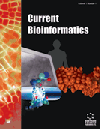- Home
- A-Z Publications
- Current Bioinformatics
- Previous Issues
- Volume 17, Issue 3, 2022
Current Bioinformatics - Volume 17, Issue 3, 2022
Volume 17, Issue 3, 2022
-
-
Machine Learning and Deep Learning Strategies in Drug Repositioning
More LessAuthors: Fei Wang, Yulian Ding, Xiujuan Lei, Bo Liao and Fang-Xiang WuDrug repositioning invovles exploring novel usages for existing drugs. It plays an important role in drug discovery, especially in the pre-clinical stages. Compared with the traditional drug discovery approaches, computational approaches can save time and reduce cost significantly. Since drug repositioning relies on existing drug-, disease-, and target-centric data, many machine learning (ML) approaches have been propos Read More
-
-
-
BDselect: A Package for k-mer Selection Based on the Binomial Distribution
More LessAuthors: Fu-Ying Dao, Hao Lv, Zhao-Yue Zhang and Hao LinBackground: Dimension disaster is often associated with feature extraction. The extracted features may contain more redundant feature information, which leads to the limitation of computing ability and overfitting problems. Objective: Feature selection is an important strategy to overcome the problems from dimension disaster. In most machine learning tasks, features determine the upper limit of the model perfo Read More
-
-
-
Deep Learning Model for Protein Disease Classification
More LessBackground: Protein sequence analysis helps in the prediction of protein functions. As the number of proteins increases, it gives the bioinformaticians a challenge to analyze and study the similarity between them. Most of the existing protein analysis methods use Support Vector Machine. Deep learning did not receive much attention regarding protein analysis as it is noted that little work focused on studying the p Read More
-
-
-
Diabetes Induced Factors Prediction Based on Various Improved Machine Learning Methods
More LessAuthors: Jun Wu, Lulu Qu, Guoping Yang and Nan HanBackground: With the increasing quality of life of people, people have begun to have more time and energy to pay attention to their own health problems. Among them, diabetes, as one of the most common and fastest-growing diseases, has attracted widespread attention from experts in bioinformatics. People of different ages all over the world suffer from diabetes, which can shorten the life span of patients. Diabetes has Read More
-
-
-
Association Analysis Between Introns and mRNAs in Caenorhabditis elegans Genes with Different Expression Levels
More LessAuthors: Yanjuan Cao, Qiang Zhang, Zuwei Yan and Xiaoqing ZhaoBackground: Introns are ubiquitous in pre-mRNA but are often overlooked. They also play an important role in the regulation of gene expression. Objective and Methods: We mainly use the improved Smith-Waterman local alignment approach to compare the optimal matching regions between introns and mRNA sequences in Caenorhabditis elegans (C. elegans) genes with high and low expression. Results: We found that the rela Read More
-
-
-
ConvChrome: Predicting Gene Expression Based on Histone Modifications Using Deep Learning Techniques
More LessAuthors: Rania Hamdy, Fahima A. Maghraby and Yasser M.K. OmarBackground: Gene regulation is a complex and dynamic process that not only depends on the DNA sequence of genes but is also influenced by a key factor called epigenetic mechanisms. This factor, along with other factors, contributes to changing the behavior of DNA. While these factors cannot affect the structure of DNA, they can control the behavior of DNA by turning genes "on" or "off," which determines which protein Read More
-
-
-
Integrated Bioinformatics and Machine Learning Algorithms Analyses Highlight Related Pathways and Genes Associated with Alzheimer's Disease
More LessAuthors: Hui Zhang, Qidong Liu, Xiaoru Sun, Yaru Xu, Yiling Fang, Silu Cao, Bing Niu and Cheng LiBackground: The pathophysiology of Alzheimer's Disease (AD) is still not fully studied. Objective: This study aimed to explore the differently expressed key genes in AD and build a predictive model of diagnosis and treatment. Methods: Gene expression data of the entorhinal cortex of AD, asymptomatic AD, and control samples from the GEO database were analyzed to explore the relevant pathways and key genes in the pr Read More
-
-
-
DILI-Stk: An Ensemble Model for the Prediction of Drug-induced Liver Injury of Drug Candidates
More LessAuthors: Jingyu Lee, Myeong-Sang Yu and Dokyun NaBackground: Drug-induced Liver Injury (DILI) is a leading cause of drug failure, accounting for nearly 20% of drug withdrawal. Thus, there has been a great demand for in silico DILI prediction models for successful drug discovery. To date, various models have been developed for DILI prediction; however, building an accurate model for practical use in drug discovery remains challenging. Methods: We constructed an ensemble mo Read More
-
Volumes & issues
-
Volume 20 (2025)
-
Volume 19 (2024)
-
Volume 18 (2023)
-
Volume 17 (2022)
-
Volume 16 (2021)
-
Volume 15 (2020)
-
Volume 14 (2019)
-
Volume 13 (2018)
-
Volume 12 (2017)
-
Volume 11 (2016)
-
Volume 10 (2015)
-
Volume 9 (2014)
-
Volume 8 (2013)
-
Volume 7 (2012)
-
Volume 6 (2011)
-
Volume 5 (2010)
-
Volume 4 (2009)
-
Volume 3 (2008)
-
Volume 2 (2007)
-
Volume 1 (2006)
Most Read This Month
Article
content/journals/cbio
Journal
10
5
false
en


